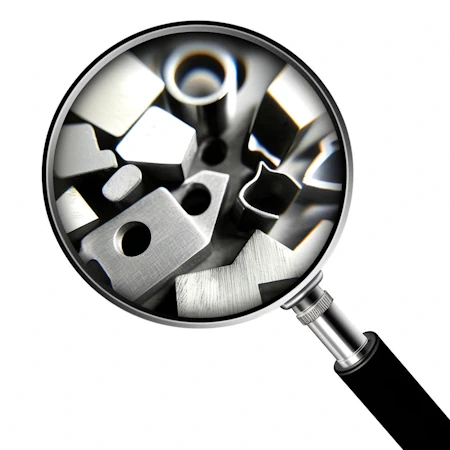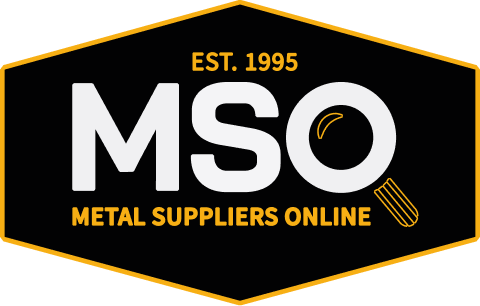Back To Browse
Titanium
Titanium 6-2-4-2-.1
Aging Procedure
Hold at 538-593 C(1000-1100 F) for 8 hours, air cool.
Annealing Procedure
Duplex anneal at 900 C(1670 F) for 1/2 hour, air cool to 788 C(1465 F) for 1/4 hour, air cool. Beta anneal at 1024 C(1900 F) for 1/2-1 hour, air cool to 593 C(1100 F), hold for 8 hours and air cool.
Applications
Typical applications include "hot section" gas turbine components such as discs, impellers, turbines, etc. It is also employed in a variety of sheet metal components such as afterburner cans and hot airframe components.
Cold Workability
The cold working characteristics of this alloy are similar to those found in austenitic stainless steels. In multiple forming operations, intermediate stress relieving is recommended to offset the alloy's tendency to work harden. Post-work annealing is recommended to reattain maximum performance characteristics.
Forgeability
Rough forge at 1038-1066 C(1930-1980 F), finish at 954-982 C(1770-1825 F).
Formability
This alloy can be hot or cold formed and will exhibit characteristics equivalent to those found in a 1/8 to 1/4 hard austenitic stainless steel.
Heat Treatability
Solution treat at beta minus 14 C(25 F).
Hot Workability
Hot forming will reduce both the springback and required forming forces, and will increase the overall ductility of the material.
Machinability
As a family, titanium and its alloys have developed a mystique as a nightmare to machine. This is simply not the case. Experienced operators have compared its characteristics to those found in 316 stainless steel. Recommended practice includes high coolant flow(to offset the material's low thermal conductivity), slow speeds and relatively high feed rates. Tooling should be tungsten carbide designations C1-C4 or cobalt type high speed tools.
Other Physical Properties
Beta Transus (F +/- 25) 1820
Principle Design Features
This near beta alloy is generally intended for high temperature use in environments up to 538 C(1000 F).It is only available at the producer level in bar, billet, sheet and plate. Beta Transus (F +/- 25) 1820.
Weldability
Rated as "fair in terms of weldability.
Known Forms
Flat Bar
Hexagon Bar
Pipe-Seamless
Pipe-Welded
Plate
Round Bar
Sheet
Square Bar
Strip
Tube-Round (Seamless)
Tube-Round (Welded)
Wire Rod
Wire-Round
Wire-Welding
Billet
Coil
Fittings
Welded Rings
Additional Data
Specifications
4975,4976Dismiss
Chemical Elements
| Aluminum | 5.5 - 6.5 |
| Carbon | 0.08 max |
| Hydrogen | 0.0125 max |
| Iron | 0.25 max |
| Molybdenum | 1.75 - 2.25 |
| Nitrogen | 0.05 max |
| Oxygen | 0.12 max |
| Silicon | 0.1 max |
| Tin | 1.75 - 2.25 |
| Titanium | Balance |
| Zirconium | 3.5 - 4.5 |
Physical Properties
Density: 0.164lb/in³
Electrical Resistivity: 191µΩ·cm
Melting Point: 3100°F
Specific Gravity: 4.54
Mechanical Properties
Modulus of Elasticity – Tension: 16.5MSI
Reduction of Area: 25%
Thermal Expansion
| Condition | Min | Max | Expansion Coefficient |
|---|---|---|---|
| Annealed | 32 °F | 212 °F | 4.3 µin/in/°F |
| Annealed | 32 °F | 600 °F | 4.5 µin/in/°F |
| Annealed | 32 °F | 1000 °F | 4.5 µin/in/°F |
Creep Test Data
| Condition | Form | Temperature | Time | Applied Stress | Creep Strain |
|---|---|---|---|---|---|
| Test Specimen Annealed | Sheet | 1000 °F | 1000 Hours | 0.1 % | 12 mil/in |
| Test Specimen Annealed | Sheet | 800 °F | 1000 Hours | 0.1 % | 58 mil/in |
Mechanical Test Data
| Form | Sheet |
| Condition | Test Specimen Annealed |
| Measurement Temperature | 70°F |
| Elongation | 10% |
| Reduction of Area | 25% |
| Tensile Strength | 130KSI |
| Yield Strength | 120KSI |
| Form | Sheet |
| Condition | Test Specimen Annealed |
| Measurement Temperature | 600°F |
| Elongation | 15% |
| Reduction of Area | 40% |
| Tensile Strength | 95KSI |
| Yield Strength | 75KSI |
| Form | Sheet |
| Condition | Test Specimen Annealed |
| Measurement Temperature | 800°F |
| Elongation | 20% |
| Reduction of Area | 55% |
| Tensile Strength | 85KSI |
| Yield Strength | 70KSI |
| Form | Sheet |
| Condition | Test Specimen Annealed |
| Measurement Temperature | 1000°F |
| Elongation | 25% |
| Reduction of Area | 65% |
| Tensile Strength | 75KSI |
| Yield Strength | 60KSI |
Find the metal you're looking for today.

